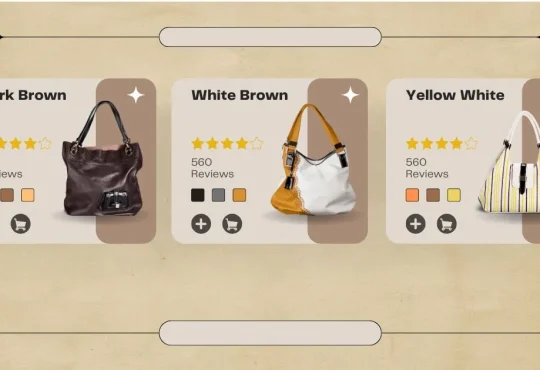
Shopping isn’t just about spending money—it’s an experience, a skill, and even an art form when done right. Whether you’re an experienced shopper or a beginner looking to refine your techniques, there’s always room for improvement. From finding the best deals to making sure every purchase is worth it, shopping smartly can save you time, money, and regret. With the right strategies, shopping can become more enjoyable, efficient, and rewarding.
In this guide, you’ll discover how to shop like a pro, making every purchase a purposeful and satisfying one. Follow these expert tips and tricks to turn your shopping trips into successful adventures, whether you’re hunting for fashion, electronics, home goods, or groceries.
How to Shop Like a Pro: Smart Shopping Tips to Save Money & Time
1. Plan Ahead for a Smooth Shopping Experience
Set a Budget and Stick to It
One of the biggest shopping mistakes is overspending, often due to impulse buys. Before you hit the stores, decide on a realistic budget based on your financial situation. A well-planned budget ensures that you spend wisely without feeling guilty later.
Pro Tip: Use budgeting apps like Mint or YNAB to track your spending and stay within limits.
Make a Shopping List
A shopping list is your best defense against impulse purchases. Write down everything you need before leaving home to stay focused and avoid distractions from tempting displays and sales tactics.
Research Before You Buy
A little research goes a long way. Before making a big purchase, compare prices online, read reviews, and check product details. Websites like Consumer Reports, Wirecutter, and Trustpilot offer insights into product quality and customer satisfaction.
2. Dress Smart for Comfort and Efficiency
Wear Comfortable Clothes and Shoes
Shopping can involve long hours of walking and trying on outfits, so choose comfortable clothing and shoes. Opt for slip-on shoes and avoid layers that are difficult to remove.
Carry a Hands-Free Bag
A crossbody bag or a backpack allows you to shop with ease, keeping your hands free for browsing. Make sure your bag has secure zippers to prevent pickpocketing in crowded areas.
3. Choose the Right Time to Shop
Avoid Peak Hours
Shopping during peak hours can be stressful and time-consuming. To avoid crowds and long checkout lines, plan your trip for:
✅ Weekday mornings (less crowded, better customer service)
✅ Late evenings (fewer shoppers, possible markdowns)
Shop During Seasonal Sales
Retailers have clearance sales at the end of each season to make room for new inventory. The best times to shop for deals include:
🛍 January & July: Clothing sales
🎁 November (Black Friday & Cyber Monday): Electronics and holiday gifts
🛏 Memorial Day & Labor Day: Furniture and home goods
4. Leverage Technology for the Best Deals
Use Shopping Apps for Discounts
Technology is a game-changer in smart shopping. Download apps like:
📱 Honey – Finds and applies coupon codes automatically.
📱 Rakuten – Offers cashback for online purchases.
📱 ShopSavvy – Compares prices across different stores.
Sign Up for Store Rewards & Newsletters
Most stores offer exclusive discounts to newsletter subscribers. Signing up can get you first access to sales, promo codes, and even birthday rewards!
5. Choose Quality Over Quantity
Invest in Timeless Pieces
It’s easy to be tempted by cheap deals, but quality matters more than quantity. A well-made item will last longer and save you money in the long run.
Example: Instead of buying five cheap shirts that shrink after one wash, invest in two high-quality ones that fit well and stay in shape.
Check Fabric, Stitching, and Materials
For clothing, inspect:
✔ Fabric – Natural fibers (cotton, wool, silk) last longer than synthetic blends.
✔ Stitching – Well-sewn seams indicate durability.
✔ Zippers and Buttons – Make sure they’re secure and easy to use.
For electronics, look at:
✔ Build quality – Avoid flimsy plastic models.
✔ Battery life – Read reviews on long-term performance.
✔ Brand reputation – Established brands often have better warranties.
6. Try Before You Buy
Test the Fit and Feel
Sizes vary between brands, so don’t rely solely on the label. Always try clothes on to check fit, comfort, and whether they flatter your body type.
Examine the Item in Different Lighting
Store lighting can be deceptive. If possible, step outside or use your phone flashlight to check colors and textures before purchasing.
For Online Shopping: Check the Return Policy
If shopping online, ensure the return policy is flexible in case the item doesn’t meet expectations. Some stores offer free returns, while others charge a restocking fee.
7. Experiment with New Styles & Trends
Balance Trends with Classics
Trendy pieces can freshen up your wardrobe, but they shouldn’t take over. Invest in classic staples like well-fitted jeans, a timeless trench coat, neutral-colored sweaters, and black boots—items that never go out of style. Then, mix in trendy accessories such as statement earrings, colorful handbags, or patterned scarves to keep your look current without committing to fast-changing trends.
When incorporating trends, choose ones that complement your style rather than redefine it. For example, if you prefer a minimalist aesthetic, opt for trendy structured blazers or sleek metallic accents rather than bold, extravagant prints.
Use a “Wait Rule” for Trends
Impulse buys can be tempting, especially when social media is flooded with must-have trends. Before purchasing a trendy item, wait a few weeks and see if you still love it. If you find yourself thinking about it repeatedly and imagining different ways to wear it, it’s a good sign that it’s a worthwhile addition to your wardrobe.
However, if the excitement fades after a few days, you’ve just saved yourself from the buyer’s regret. A great trick is to add the item to your online cart and revisit it later. If it still excites you after some time, it may be worth the investment!
8. Master the Art of Bargaining
Where and When to Negotiate
In some stores, haggling is acceptable, especially in flea markets, vintage shops, and independent boutiques.
💡 Pro Tip: Always be polite and start with a friendly question like,
“Is there any flexibility in the price?”
Be Ready to Walk Away
If the price isn’t right, don’t be afraid to walk away. Many sellers will lower the price rather than lose a sale.
9. Check the Return & Exchange Policies
Know the Time Limits
Return policies vary:
📅 14-30 days: Most clothing and retail stores
📅 60-90 days: Some department stores & large chains
📅 Final Sale Items: No returns allowed
Keep Your Receipts
Always save your receipts or opt for digital receipts to make returns hassle-free.
Shop Smarter, Not Harder
Shopping like a pro is about making informed decisions, getting the best value, and having fun while doing it. By planning, using technology, and being mindful of quality, you can transform shopping from a routine task into a rewarding experience.
So next time you hit the stores—whether online or in-person—keep these pro tips in mind. Happy shopping!







